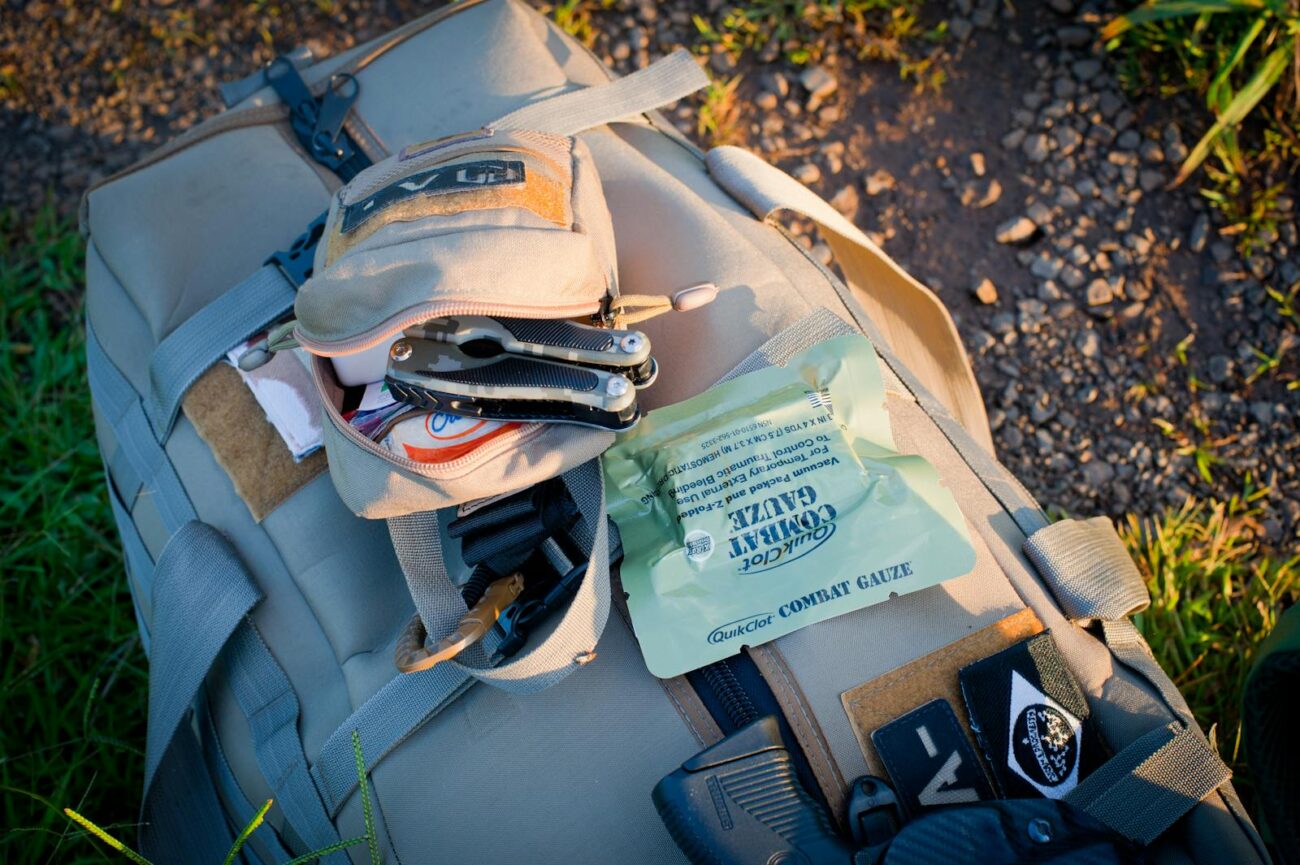Outdoor adventures offer freedom, rejuvenation, and connection with nature, but they also come with inherent risks. Whether you’re hiking through remote trails, camping under the stars, or simply enjoying a day at the park, being prepared for medical emergencies can mean the difference between a minor inconvenience and a life-threatening situation. A well-stocked first aid kit is your first line of defense against injuries and illnesses that can occur miles away from professional medical help. The following 15 essential items should be in every outdoor enthusiast’s first aid kit, regardless of experience level or destination. These supplies address common outdoor injuries while being compact enough to carry in a backpack, ensuring you’re always ready to handle emergencies in the wild.
1. Adhesive Bandages in Various Sizes
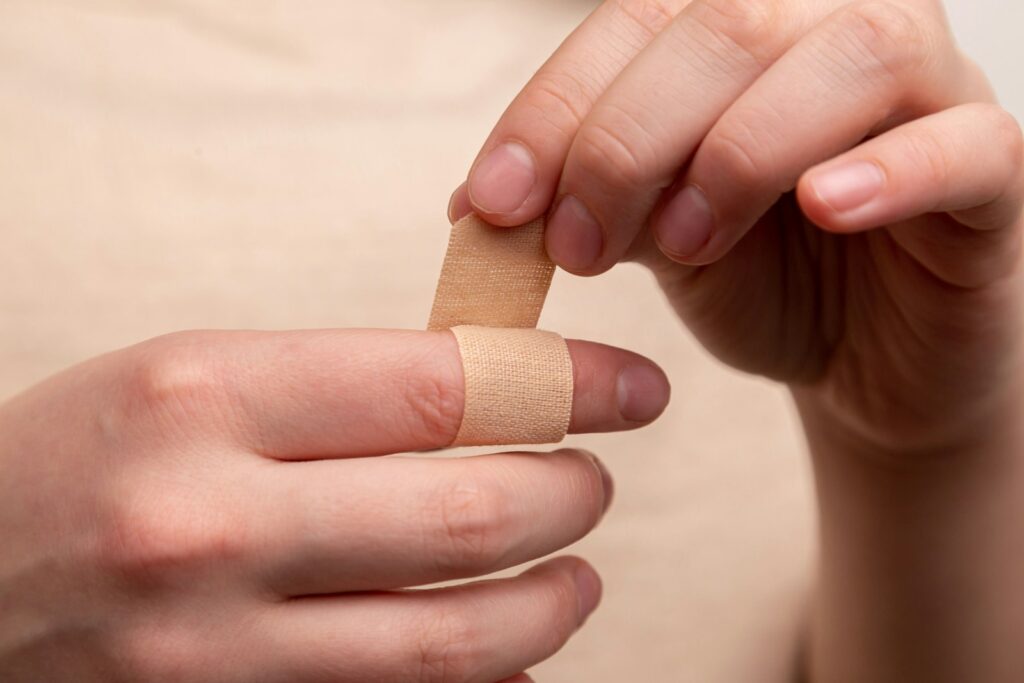
Adhesive bandages are perhaps the most frequently used item in any first aid kit, making them an absolute necessity for outdoor excursions. These versatile supplies come in various sizes to accommodate different wounds, from small cuts on fingers to larger scrapes on knees or elbows. The best outdoor first aid kits include waterproof versions that stay attached even during water activities or in humid conditions. Beyond just covering wounds, quality adhesive bandages help keep dirt and bacteria away from open cuts, significantly reducing infection risk in wilderness settings where proper wound cleaning might be difficult. For extended trips, pack at least 20-25 bandages of different sizes to ensure you’re prepared for multiple injuries or bandage changes throughout your journey.
2. Sterile Gauze Pads and Roll Bandages
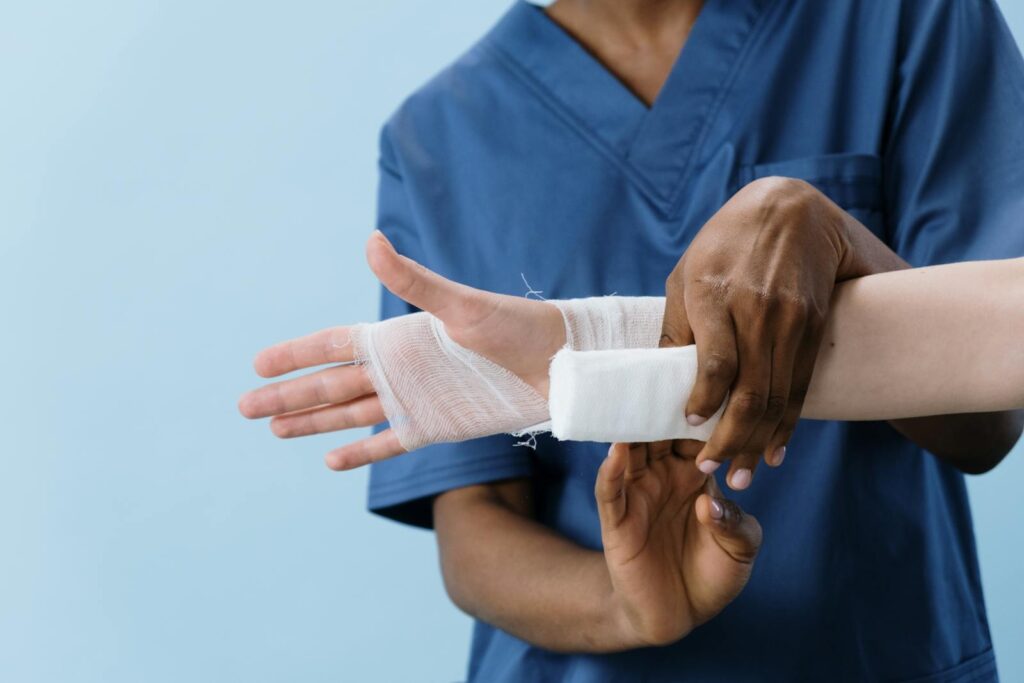
For injuries too large for standard adhesive bandages, sterile gauze pads and roll bandages become essential components of your outdoor first aid arsenal. These versatile supplies can address larger wounds, burns, or blisters that require more coverage and protection than adhesive bandages can provide. Sterile gauze pads, typically in 2×2-inch and 4×4-inch sizes, serve as the primary wound covering, while conforming roll bandages secure the gauze in place, particularly on joints or areas with significant movement. When selecting gauze for outdoor adventures, opt for individually wrapped, sterile packets that maintain their cleanliness until needed, even when jostled in a backpack for days. This combination of supplies allows you to create custom-sized dressings for virtually any wound you might encounter in the wilderness, from unexpected cooking burns at camp to significant scrapes from a fall on rocky terrain.
3. Antiseptic Wipes and Solution
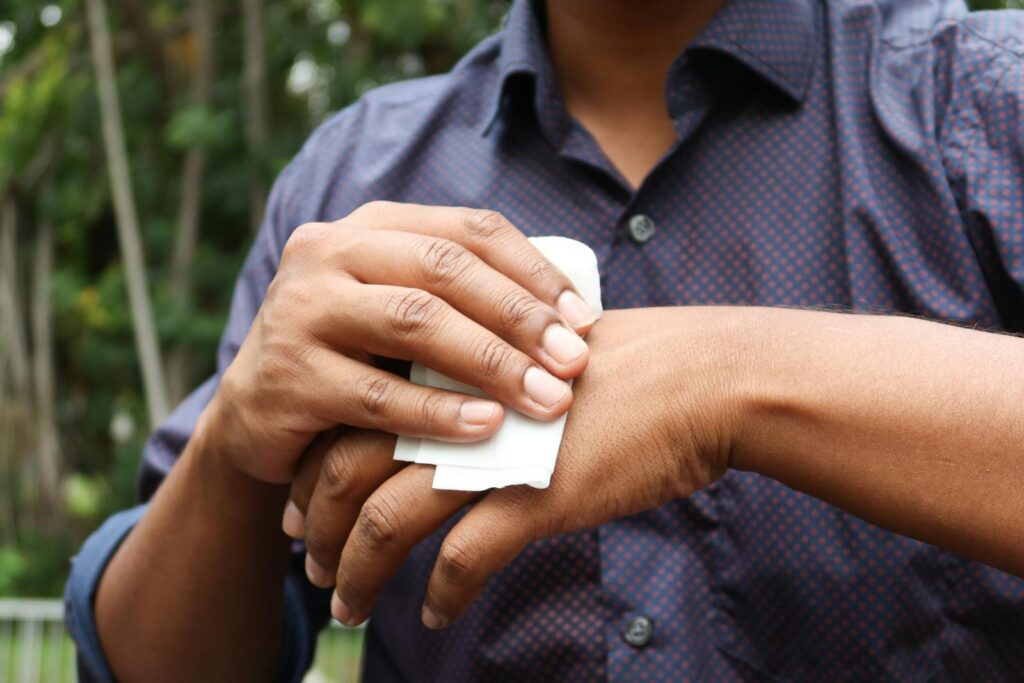
Proper wound cleaning is critical in outdoor settings where dirt, bacteria, and other contaminants can quickly lead to infection. Antiseptic wipes and solutions containing ingredients like benzalkonium chloride or povidone-iodine provide effective sanitization of both wounds and the hands of the person providing first aid. Individual antiseptic wipe packets are ideal for outdoor use as they remain sterile until opened and don’t risk leakage like bottled solutions might. For more serious wounds encountered in backcountry settings, having a small bottle of antiseptic solution allows for thorough irrigation and cleaning when natural water sources might be contaminated. The importance of proper wound cleaning cannot be overstated in wilderness first aid, as even minor cuts can develop into serious infections when days away from medical facilities, potentially turning a simple injury into a trip-ending emergency requiring evacuation.
4. Pain Relievers and Anti-inflammatory Medications

Over-the-counter pain relievers serve multiple purposes in outdoor first aid, addressing everything from headaches and muscle pain to fever and inflammation from injuries. Your kit should include both acetaminophen (Tylenol) and ibuprofen (Advil, Motrin), as they work differently and address various conditions—acetaminophen primarily reduces pain and fever, while ibuprofen also reduces inflammation. For extended backcountry trips, calculate the potential maximum dosage needs based on your group size and trip length, then add an additional 50% to account for unexpected situations or higher dosing requirements. Store these medications in waterproof containers with clearly marked expiration dates, and consider using blister packs rather than bottles to save space and protect against moisture. Remember that in wilderness settings, managing pain effectively can sometimes mean the difference between someone being able to self-evacuate and requiring emergency assistance, making these simple medications vital components of comprehensive outdoor preparedness.
5. Tweezers and Fine-Point Scissors
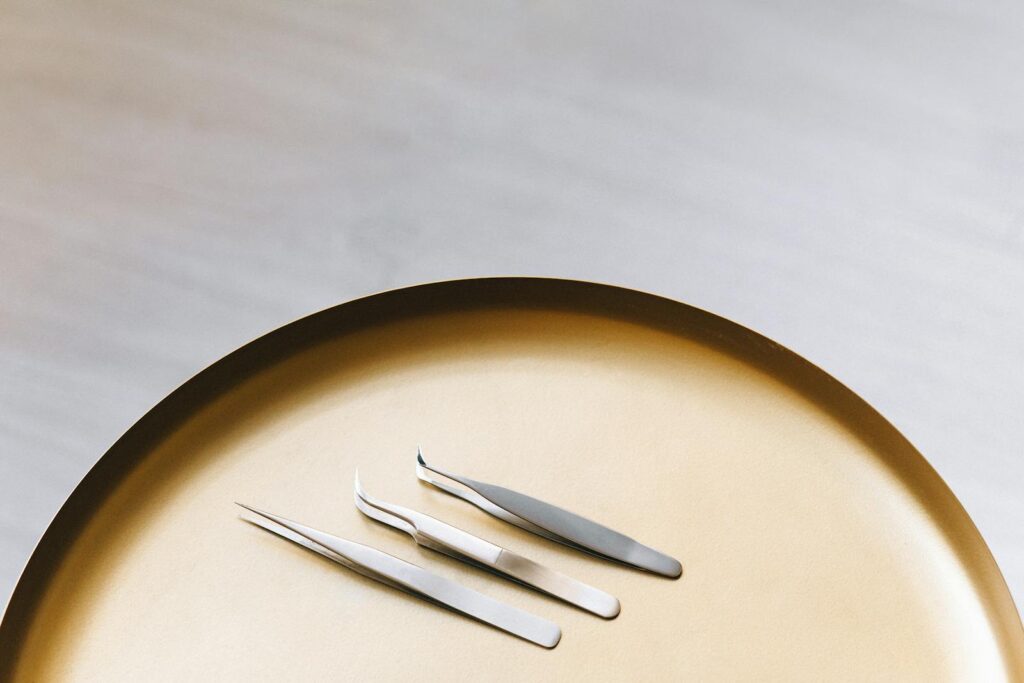
Precision tools like tweezers and fine-point scissors perform critical functions in wilderness first aid situations that cannot be easily accomplished with other items. High-quality tweezers with fine, pointed tips are essential for removing splinters, thorns, ticks, or other foreign objects that commonly become embedded in skin during outdoor activities. Opt for stainless steel tweezers that won’t rust when exposed to moisture and maintain their grip precision even after multiple uses. Medical-grade scissors with blunt tips provide safe cutting of bandages, clothing, or tape when treating injuries, especially in sensitive areas or when a patient cannot move easily. These scissors should be strong enough to cut through seat belts or thick clothing in emergency situations but compact enough to fit easily in your kit. Both tools benefit from having dedicated protective cases or covers to maintain their sharpness and cleanliness, ensuring they perform optimally when needed most during wilderness emergencies.
6. Emergency Space Blanket

Emergency space blankets, also known as mylar thermal blankets, provide crucial protection against hypothermia in outdoor emergency situations. Despite weighing just a few ounces and folding to the size of a deck of cards, these metallized polyester sheets can reflect up to 90% of a person’s body heat back to them, making them surprisingly effective at preserving core temperature. In wilderness first aid scenarios, space blankets serve multiple functions beyond just warmth—they can create an emergency shelter from rain or snow, serve as a ground cover to prevent direct contact with cold earth, or even function as a signaling device with their reflective surface visible from great distances. For comprehensive preparedness, carry at least one space blanket per person in your group, as they’re inexpensive enough to distribute widely but valuable enough to potentially save lives in unexpected weather changes or injury situations that prevent normal movement and self-heating. Their lightweight and compact nature makes them one of the highest value-to-weight ratio items in any outdoor first aid kit.
7. Compression Bandage or Elastic Wrap
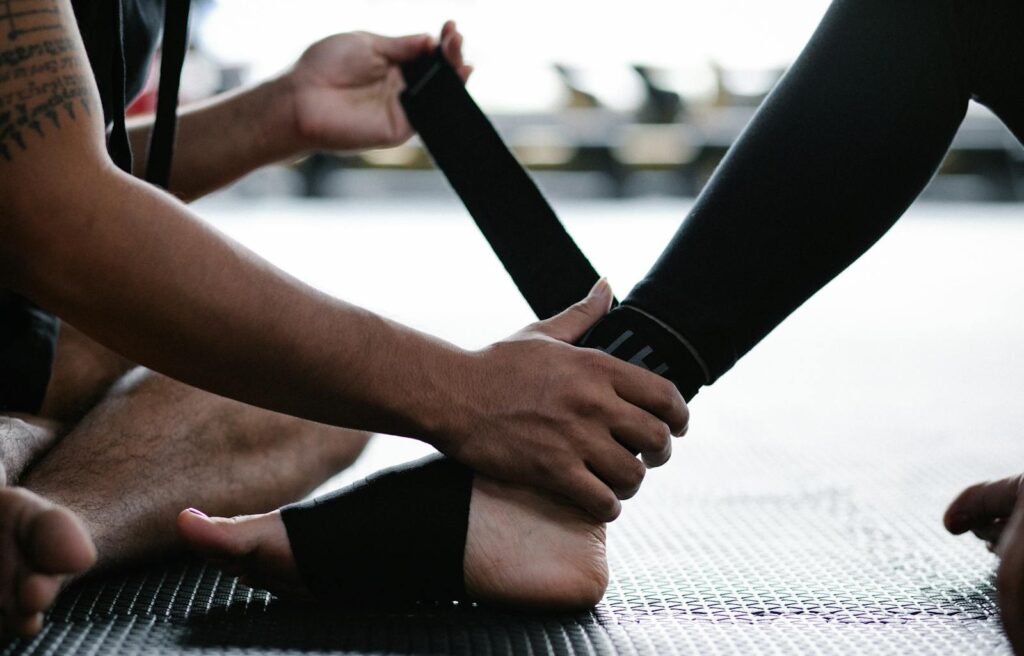
Compression bandages provide critical support and stabilization for sprains, strains, and other soft tissue injuries that commonly occur during outdoor activities. These elastic wraps, typically 3-4 inches wide and several feet long, create pressure that reduces swelling, supports injured joints, and limits painful movement when properly applied. Unlike regular gauze, compression bandages stretch and conform to body contours while maintaining tension, making them ideal for wrapping ankles, knees, wrists, and elbows—joints particularly vulnerable during hiking and climbing activities. When selecting compression bandages for your outdoor kit, look for self-adhering varieties that don’t require clips or fasteners that could be lost in the field. Proper application involves wrapping from below the injury site upward with overlapping layers, creating more pressure distally (away from the heart) and less proximally (toward the heart) to avoid impeding circulation. These versatile bandages can also improvise as slings, pressure bandages for bleeding control, or even emergency cordage in survival situations, making them among the most multi-functional items in wilderness first aid supplies.
8. CPR Face Shield
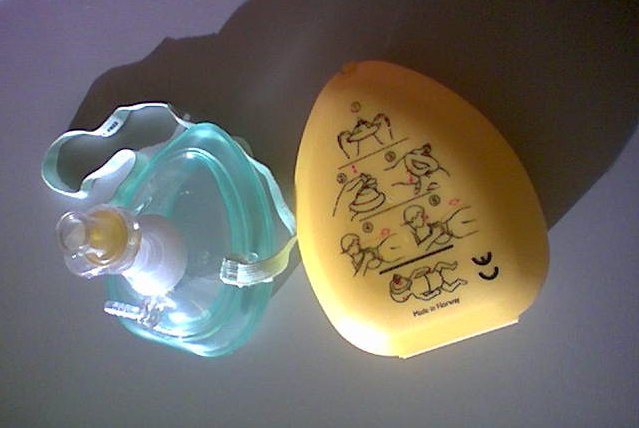
A CPR face shield serves as a critical barrier device that enables rescuers to provide potentially life-saving rescue breaths while minimizing direct contact with a victim’s bodily fluids. These transparent, flat-folding devices typically feature a one-way valve that allows air to flow from rescuer to victim while preventing backflow of fluids, reducing transmission risk of bloodborne pathogens and other infectious agents. Modern CPR shields designed for outdoor use weigh less than an ounce and fold to credit card size, making them negligible additions to any first aid kit in terms of weight and space. Despite their small size, these devices significantly increase the likelihood of bystanders actually performing rescue breathing when needed, as many people hesitate to provide mouth-to-mouth resuscitation without protective barriers, especially to strangers. While wilderness cardiac arrests are relatively rare, they do occur from drowning, lightning strikes, severe allergic reactions, or other traumatic events, making CPR shields valuable insurance for those critical situations where minutes without oxygen can mean the difference between full recovery and permanent neurological damage.
9. Nitrile Gloves
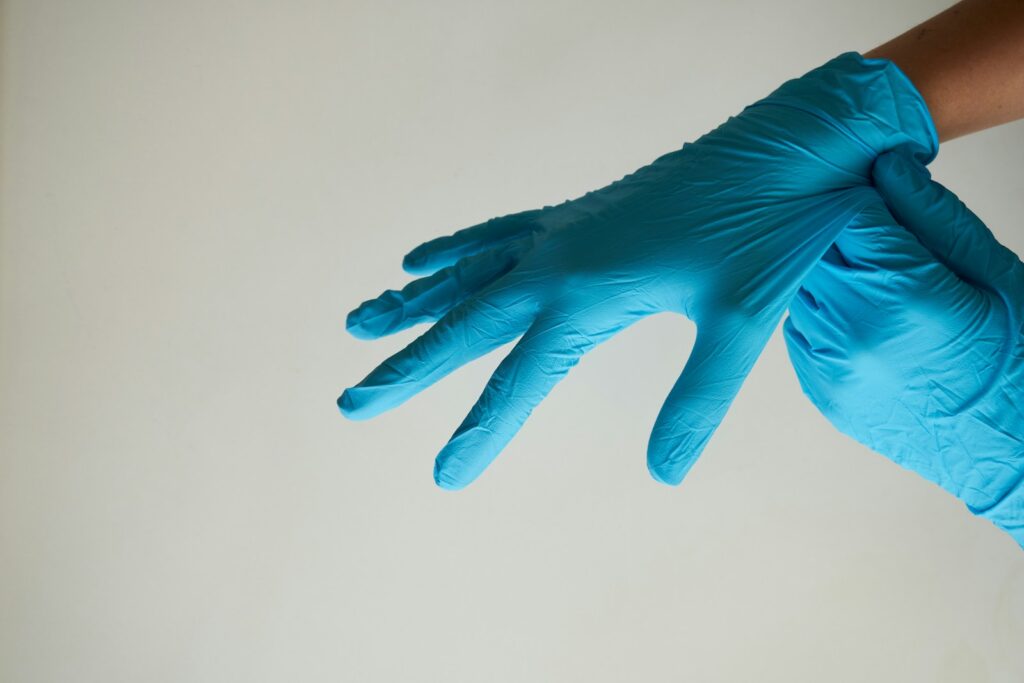
Nitrile gloves provide essential protection for both the first aid provider and the patient during wilderness medical situations. Unlike latex gloves, nitrile versions avoid potential allergic reactions while offering superior puncture resistance and chemical protection, important factors when dealing with unknown substances or environments. For outdoor first aid kits, pack at least three pairs of gloves in appropriate sizes for potential responders, storing them in sealed plastic bags to protect against moisture and contamination before use. These gloves create a crucial barrier when dealing with bodily fluids, cleaning contaminated wounds, or treating strangers whose medical history may be unknown. Beyond their primary medical purpose, nitrile gloves serve multiple additional functions in wilderness settings—they can protect hands when dealing with poisonous plants, create water-tight containers when tied off, or even serve as improvised cold compresses when filled with snow or cold water. Their thin profile and exceptional tactile sensitivity allow for detailed tasks like splinter removal or wound cleaning while maintaining proper sanitation protocols, making them indispensable components of comprehensive outdoor emergency preparedness.
10. Blister Treatment Supplies
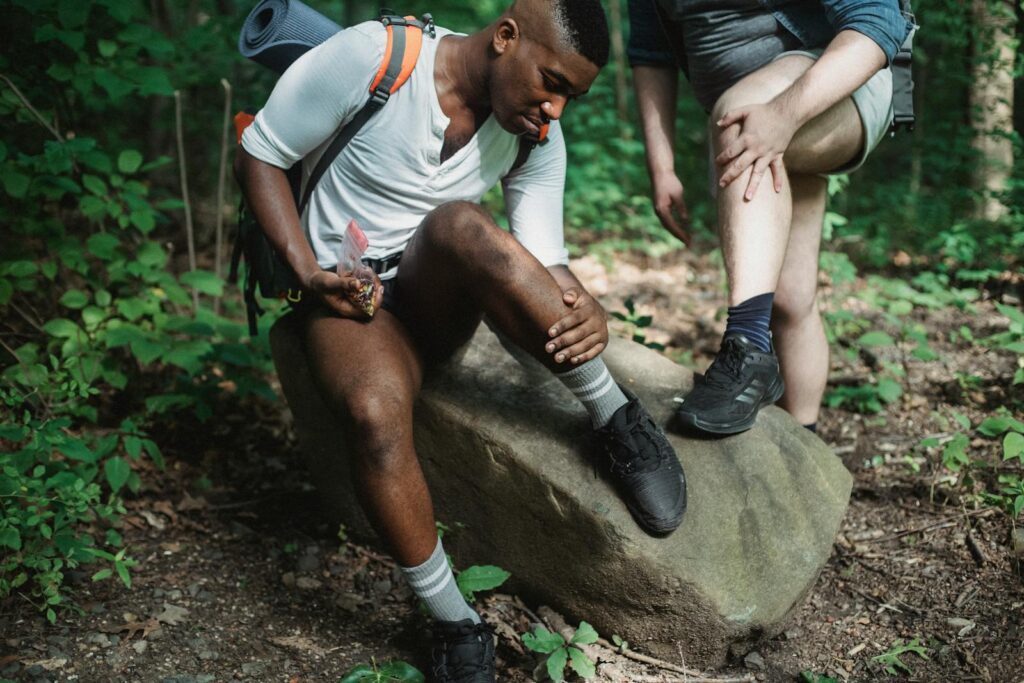
Blisters represent one of the most common and potentially trip-ruining injuries encountered during hiking, backpacking, and other outdoor pursuits involving substantial foot travel. A comprehensive blister care kit should include specialized blister bandages or moleskin that can be cut to size and shaped around hot spots before they develop into full blisters. For already formed blisters, include sterile needles or small safety pins (sterilized with flame or alcohol) for drainage, alongside antibiotic ointment to prevent infection after drainage procedures. Specialized products like Compeed or hydrocolloid dressings provide superior protection for drained blisters as they create a second-skin effect that allows continued activity while promoting healing. Prevention remains the best approach to blister management, so consider including small rolls of athletic tape, friction-reducing foot powder, and thin liner socks in your extended first aid supplies for multi-day expeditions. The ability to effectively treat blisters can quite literally save an outdoor adventure, as untreated foot blisters can progress from minor annoyances to debilitating injuries that prevent normal walking and necessitate early trip termination.
11. Emergency Whistle and Signal Mirror
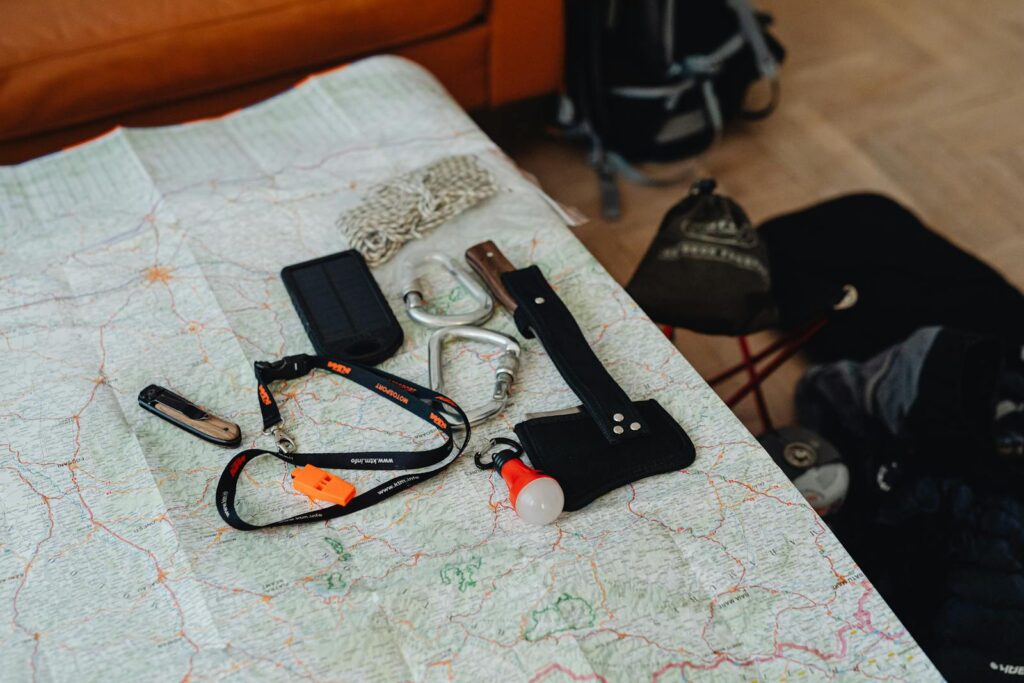
Communication devices that function without batteries or cellular service provide critical backup when emergencies occur in remote areas. A high-decibel emergency whistle can project sound much farther than the human voice, particularly important when injuries leave victims unable to shout effectively or when voice calls might be drowned out by environmental noise like rushing water or wind. The international distress signal consists of three short blasts, repeated at intervals, making it essential that all group members recognize this pattern. Complementing the whistle, a signal mirror provides visual signaling capabilities over remarkable distances—a quality signal mirror can be spotted from over 10 miles away in ideal conditions and from aircraft flying overhead. Modern emergency mirrors feature aiming devices or sighting holes that make them significantly more effective than improvised reflective surfaces. Both these lightweight communication tools should be carried on your person rather than in a pack, ideally attached to a lanyard or zipper pull where they remain accessible even after separation from main equipment, as they serve little purpose if unreachable during the very emergencies they’re designed to address.
12. Antihistamines for Allergic Reactions

Antihistamines serve as frontline defense against allergic reactions ranging from uncomfortable seasonal allergies to more serious responses to insect stings, plant contact, or unexpected food allergens encountered during outdoor excursions. Both non-drowsy options (like cetirizine/Zyrtec or loratadine/Claritin) and drowsy formulations (diphenhydramine/Benadryl) should be included, as each serves different purposes in wilderness settings. The faster-acting diphenhydramine proves more valuable for acute allergic reactions with symptoms like hives, itching, or mild swelling, while non-drowsy formulations better address ongoing exposure situations where alertness remains necessary for safe outdoor activities. For individuals with known severe allergies, epinephrine auto-injectors represent life-saving additions to personal first aid supplies, though these prescription items require proper training and should be carried in temperature-controlled conditions. When packing antihistamines, include both adult and child-appropriate dosages if your group includes younger members, and clearly mark all medications with name, dosage instructions, and expiration dates to prevent confusion during high-stress emergency situations when clear thinking might be compromised.
13. Instant Cold Packs
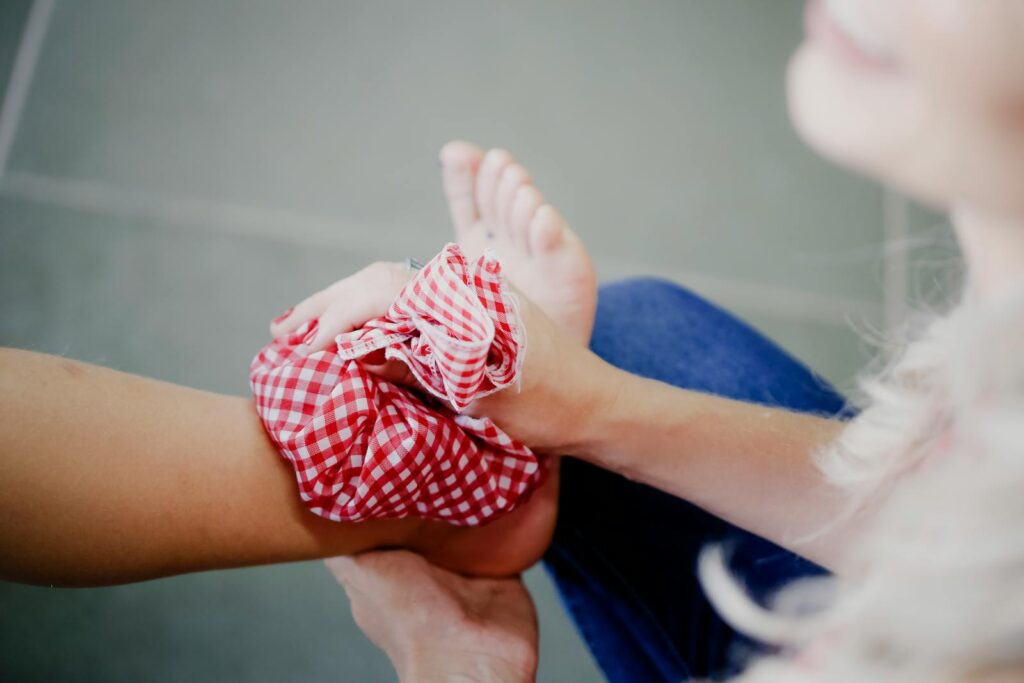
Instant cold packs provide crucial immediate treatment for sprains, strains, insect stings, and other injuries requiring cold therapy when ice or cold water sources aren’t readily available. These single-use chemical packs activate by squeezing or bending, creating an endothermic reaction that typically maintains cold temperatures for 15-30 minutes without refrigeration or electricity. For wilderness applications, choose compact versions specifically designed for first aid rather than bulkier food-cooling varieties, as the medical-grade options optimize the balance between effectiveness, weight, and packability. The proper application of cold therapy within the first hour of injury can significantly reduce swelling, inflammation, and pain, potentially preventing minor injuries from developing into more serious conditions requiring evacuation. When using cold packs in remote settings, always place a thin barrier like a bandana or t-shirt between the pack and skin to prevent cold injuries, and limit application to 20-minute intervals with equal rest periods between applications. Unlike reusable gel packs, disposable chemical cold packs require no pre-chilling, making them invaluable for unexpected injuries that occur far from established campsites or vehicles where traditional ice might be stored.
14. Emergency Dental Repair Kit
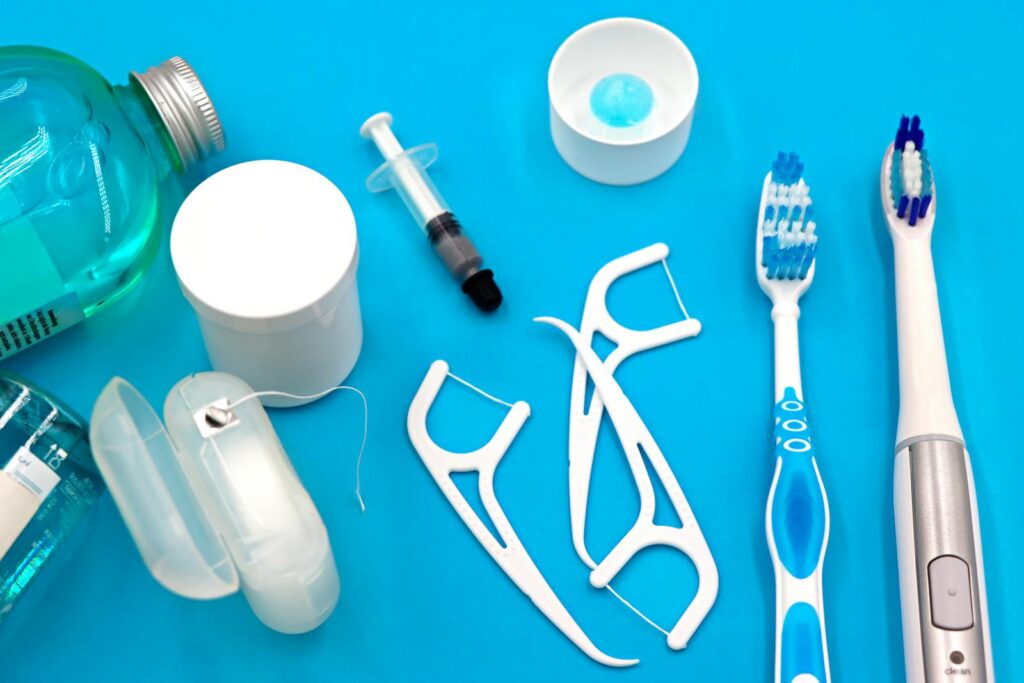
Dental emergencies in wilderness settings can quickly escalate from painful distractions to trip-ending emergencies without proper supplies for temporary treatment. A compact dental repair kit should include dental cement or temporary filling material that can stabilize broken teeth or lost fillings until professional care becomes available. Dental wax serves a dual purpose by covering sharp broken edges that could damage soft tissue and by temporarily securing loose crowns or bridges that might otherwise be swallowed or lost. Oral anesthetic gel containing benzocaine provides crucial pain relief for toothaches, gum injuries, or mouth sores that might otherwise make eating, drinking, or even sleeping nearly impossible during extended backcountry trips. Complete your dental emergency supplies with small cotton pellets and dental picks for applying materials precisely and removing food debris from sensitive areas. While these supplies don’t replace professional dental care, they can transform potentially trip-ending dental problems into manageable situations that allow continuation of planned activities until proper treatment becomes accessible, making them especially valuable for remote expeditions far from dental facilities.
15. First Aid Reference Guide
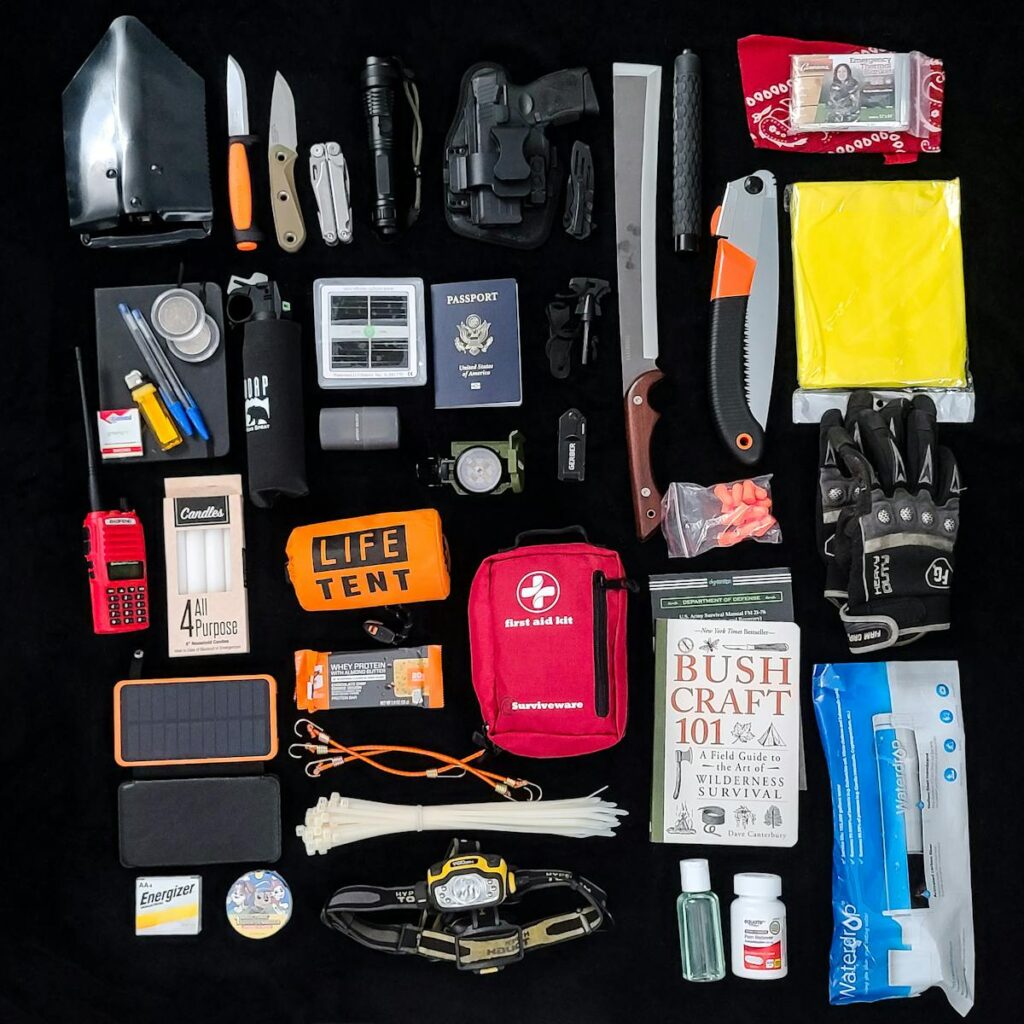
Even experienced outdoor enthusiasts benefit from carrying a compact first aid reference guide that provides clear, step-by-step instructions for treating various wilderness emergencies. The ideal guide should be waterproof, tear-resistant, and small enough to fit easily in your kit while featuring high-contrast text that remains readable in low light conditions. Beyond basic wound care, comprehensive wilderness medical guides include specialized protocols for environmental emergencies like hypothermia, heat illness, and altitude sickness, as well as techniques for improvising splints, stretchers, and other equipment from available materials. Rather than general first aid manuals, select publications specifically designed for wilderness and remote settings where evacuation delays and limited resources require different approaches than traditional urban first aid. Many quality outdoor-specific guides include visual decision trees that help users quickly determine appropriate treatment paths during stressful emergency situations when cognitive function may be impaired. The best reference materials also address psychological first aid for managing panic, clarify when evacuation becomes necessary versus when field treatment suffices, and include blank pages for recording vital signs and symptoms—critical information for medical professionals if evacuation eventually occurs.
Conclusion
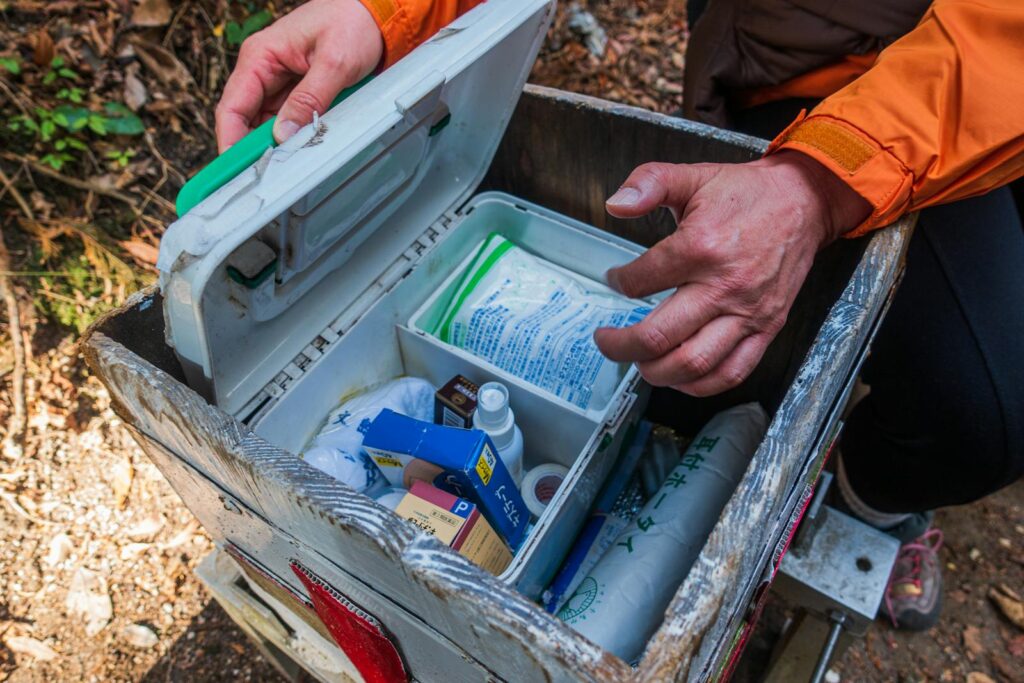
A well-prepared outdoor first aid kit containing these 15 essential items provides peace of mind and practical protection against the unpredictable nature of wilderness adventures. The contents balance comprehensive care capabilities with practical considerations of weight and space, ensuring you’re equipped to handle common outdoor emergencies without overburdening

